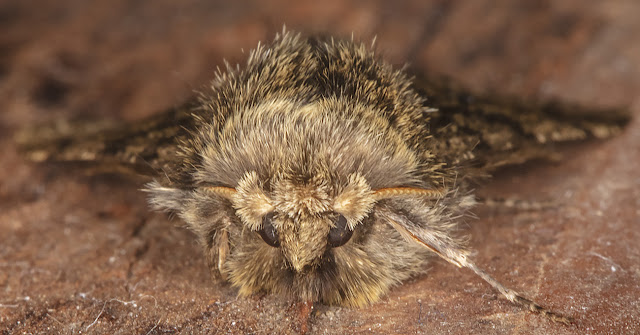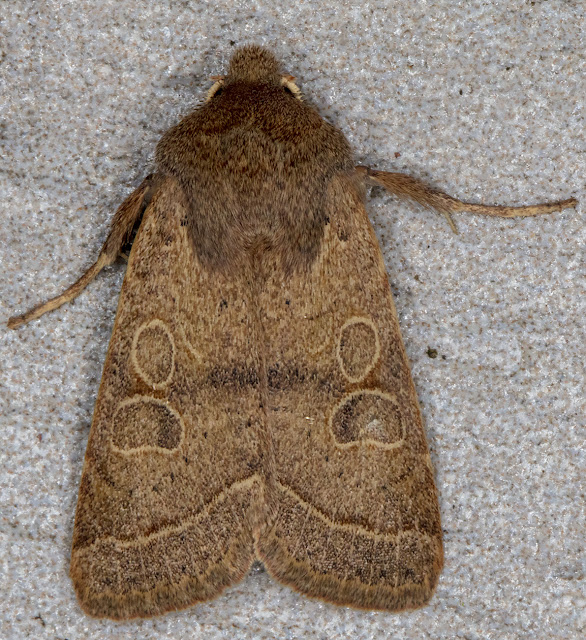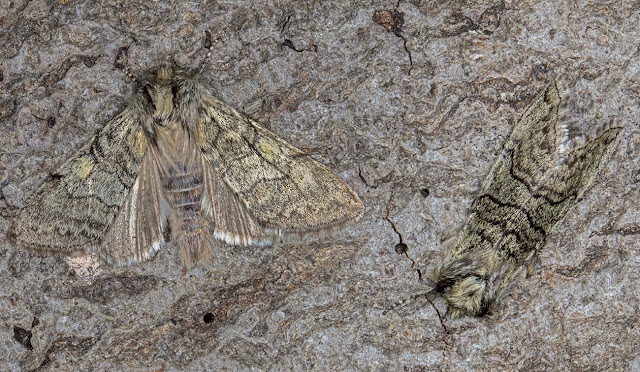 |
| Small Brindled Beauty, Apocheima hispidaria. In my light trap in Crowborough on 4 March 2018. |
The moths are back! Here are a few that have turned up in my garden light trap in Crowborough. Some of these are moths I haven't seen before - they may well be common around here, but I haven't trapped in Crowborough at this time of year before.
This first one is a Small Brindled Beauty, one of those which are new to me. Here's another new one:
 |
| Grey Shoulder-knot, Lithophane ornitopus. In my light trap in Crowborough on 11 March 2018. |
A Grey Shoulder-knot. Moths with stripes on their shoulders like this one were called shoulder-knots. There are three others in this country, though one of them has only been seen once.
 |
| Hebrew Character, Orthosia gothica. In my light trap in Crowborough on 11 March 2018. |
Unlike this Hebrew Character, which is extremely common. It gets its common name from the resemblance of its marking to the Hebrew letter Nun.
Here's another common one:
 |
| Common Quaker, Orthosia cerasi. In my light trap in Crowborough on 11 March 2018. |
A Common Quaker. This shows in its simplest form the typical wing markings of the family Noctuidae, usually called the oval and the kidney-mark, though I often see the kidney-mark referred to as the reniform stigma, which means exactly the same but in language which says "I am an expert, so you have to believe what I say."
The Hebrew Character above has exactly the same markings, but they are disguised by the rest of its wing pattern. You can also see them on the Grey Shoulder-knot, but again they are mixed in with the rest of the pattern.
 |
| Small Quaker, Orthosia cruda. In my light trap in Crowborough on 11 March 2018. |
On this Small Quaker, you can see the kidney-mark clearly, but the oval is almost completely invisible.
These last three moths are not only in the same family, Noctuidae, but belong to the same genus, Orthosia.















